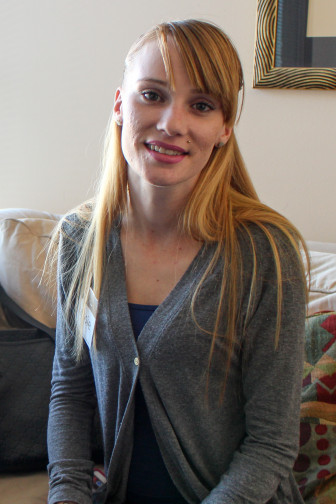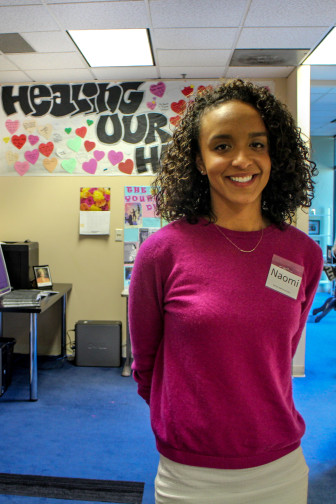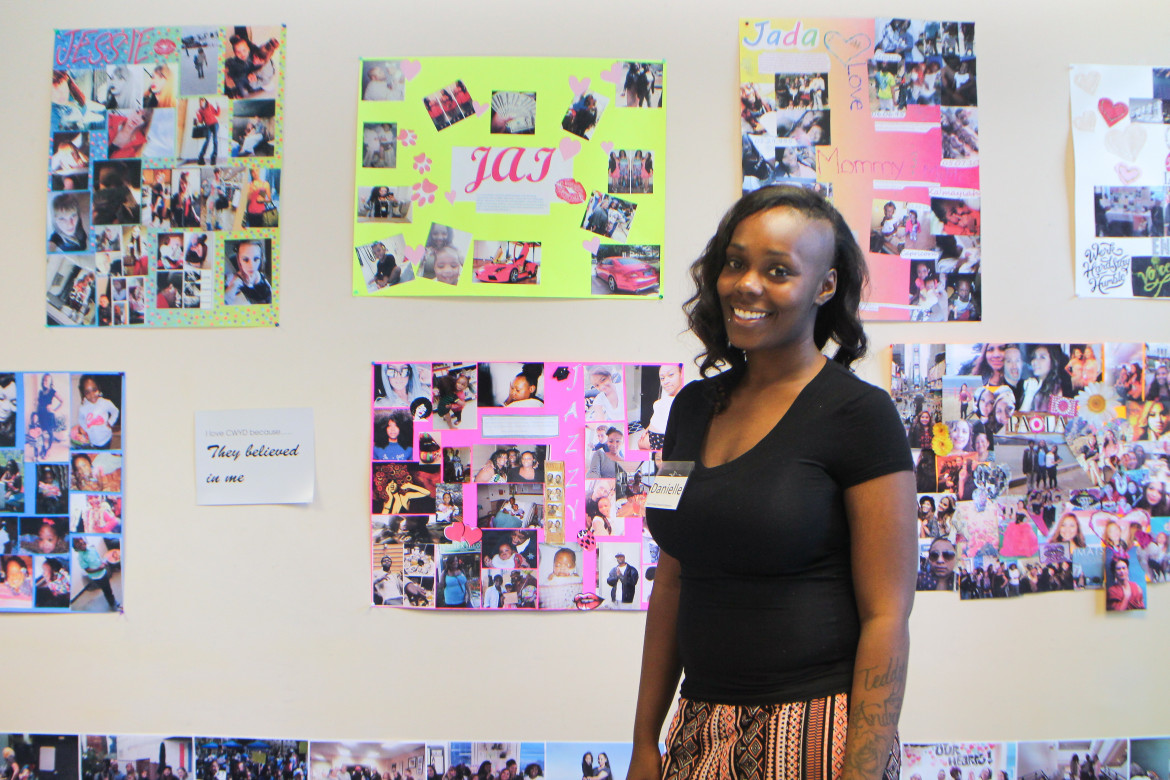Since the day she ran away from her mother’s home at 14, Danielle Lynette Robinson was in and out of Hillcrest Juvenile Hall in San Mateo, Calif. for the next four years.
“It was like my first real home actually — somewhere I could be safe and well taken care of,” Robinson said.
With her cousin serving as the director of her juvenile hall and her brother staying in the boys’ camp, Robinson said she felt comfortable doing time — at least, much more comfortable than she did while living with her mother or while living in foster care.
“Me and my mom wasn’t getting along too well,” Robinson said. “My dad spoiled me so I would run away to him when he and my mom split up.”
Then, a year after her first juvenile hall sentence, Robinson’s dad passed away.
“That’s when things got much worse for me,” Robinson said. “[The court] moved me to San Francisco and began putting me into foster care.”
Instead of her ending up in juvenile hall for repeatedly running away from home, she soon began serving time for more serious offenses: multiple truancies at school, fighting at school, getting kicked out of class and bringing alcohol to school. She spent her four years of high school at five different institutions including San Mateo High School; Raoul Wallenberg Traditional High School; Civic Center Secondary School; Margaret J. Kemp Camp for Girls, a juvenile justice facility in San Mateo; and finally the continuation school at Hillcrest Juvenile Hall.
“I just figured since I was under 18 and I could do whatever and just end up in juvenile hall, I didn’t care,” Robinson said. “There were times I felt like I was going to change but that’s only because I was locked up. Once I got back on the street, I acted the same.”
Motherhood changed her
But when she turned 18, things changed for Robinson — she served her last sentence in juvenile hall and had a daughter one year later.
“Having a daughter changed my whole mind frame in life,” Robinson said. “I had someone else to take care of and I wanted to be there for her.”
Still, Robinson felt alone. She had trouble gaining employment, did not have the financial support of her family, did not have many friends and suffered domestic abuse at the hands of her long-term boyfriend. Finally getting out of her abusive relationship and feeling as though she had no one else to turn to, she spoke to her yoga mentor from juvenile hall who recommended she visit the Center for Young Women’s Development (CYWD) in San Francisco and apply to their Sisters Rising job program. In 2013, at 21, she applied and was accepted.

Sarah Zahedi
Jessie Akin, 21, is one of the young women in the Sisters Rising program. She has taken part in the Sisters Rising program at age 16 and again at age 20 after getting out of county jail.
For 20 years, the Center for Young Women’s Development has been a safe space for thousands of young women ages 16 to 24 who have been incarcerated or are homeless in the San Francisco Bay Area. In part, the center serves as a recreational area where these marginalized, low- and no-income young women can socialize and use the center’s computers, plus the children’s playroom since many are young mothers.
CYWD administrators also go to local juvenile halls to conduct workshops for incarcerated young women — many of whom end up coming to the center when they are released. The center is most recognized for its strategies to give these women opportunities for personal and professional growth, such as the Sisters Rising program.
Through Sisters Rising, CYWD administrators hire about 10 women for a nine-month-long internship, training them to be community organizers and paying them $15 an hour as they simultaneously learn soft job skills like resume building and interviewing tactics. The center tries to meet the unique needs of each woman, according to Naomi Briley, the CYWD senior administrator/operations director.
“Everyone has a different goal when they get here,” Briley said. “One might be helped with going on to pursue higher education, someone else might want to get a full-time permanent job, someone else might be getting out of an abusive relationship. We work with each woman to put together a plan with their goals so we can empower them to pursue those goals.”
Systemic issues
This past year, those in Sisters Rising completed a participatory action research project in which they put together a survey about the needs of young, low-income women of color in the area through focus groups and street-based outreach. The goal is to share this information with other agencies and to better model the center’s programs to fill these needs.
As community organizers, they learn about the systemic issues that have directly affected their lives, such as the fact that young women of color are disproportionately suspended from school, are far more likely to be murdered and experience intimate partner violence at greater rates than white girls and women. For those who are unmarried, they have one penny of wealth for every dollar of wealth accumulated by their male counterparts and a fraction of a penny for every dollar accumulated by white women. At the same time, they experience increasingly higher rates of incarceration than their white counterparts.
In San Francisco, black women represent 5.8 percent of the city’s female population but account for 45.5 percent of all female arrests in 2013, according to a report from the Center on Criminal and Juvenile Justice. On the national level, black women are incarcerated at four times the rate of white women and Hispanic women are 69 percent more likely than their white counterparts to be locked up.
“San Francisco is one of the wealthiest cities in the country and this group of young women often goes under the radar in the area,” Briley said. “These unnoticed young women are not being served by the juvenile justice system and sometimes are being filtered back through it. We want to make sure this doesn’t happen and that they can work becoming leaders of their own lives and of their communities.”
Talking helps
By analyzing the barriers and issues that women of color like herself face, Danielle Robinson said she has been better able to understand her own life through Sisters Rising.
“We all have stuff that was just thrown at us in life and choices that wasn’t given to us and we just got to take it and roll with it,” Robinson said. “The stuff we have been through is deep and makes us act a certain way, but we just got to find a way to get past it and heal the wounds we got and find a way to make it positive, not give up, keep thriving, keep pushing forward.”
Despite the daily challenges of working to support herself and her daughter on her own, Robinson said talking through her issues with the other young women has kept her going. Without the center, she said, she would not be here today.
“The day-to-day lifestyle is just so stressful and it’s been hella times I wanted to give up and not fight or commit suicide or whatever,” Robinson said. “But I got my daughter and … my daughter can live through me and, you know, keep it going.”

Sarah Zahedi
Naomi Briley, the CYWD senior administrator/operations director.
Although the job is part-time, with most of the women in the program working 10 to 15 hours per week, many who go through the program end up becoming full-time employees at the center. Two such women are the director of organizing and research, Shanell Williams (who has just left CYWD), and the executive transition consultant Jessica Nowlan. Both Williams, 30, and Nowlan, 35, had been through the juvenile hall system since they were 13 and knew about or participated in the center’s programs as youth. They have worked to mentor the women at CYWD, relating their experiences to those of the new generation.
“I’m still growing and developing; there’s a lot of my life that’s still unwritten. But, it feels good to be able to tell other young women, ‘Hey, there’s a future, it’s not like your life has to revolve around being in lockup,’” Williams said. “A lot of people think once you’re in the system, you’re stuck, so it’s really important for them to see people who have been in the system and have made it out.”
“When you come to the center, you are immersed in sisterhood,” Nowlan said. “That’s really important because there’s really powerful knowledge from people that are affected by larger systems. That experiential knowledge really helps them come into their own power, and I’m so in awe of the young women that come here. I know they’re the next leaders.”
Support is crucial
Some of the women in Sisters Rising, like Robinson, have worked as community organizers for longer than the designated nine months. Since 2013, Robinson has been coming to the center nearly every day. While the steady income and the free child care are partly why she keeps coming back, she said the support from other women who have been through similar circumstances has been the most important.
“I don’t have that many friends so when I come here, I see all these beautiful people and they make me happy,” Robinson said. “When I come here I got support, I got people I can relate to, I just got people who are supportive, loving and caring and I love them.”
Today, Robinson said thanks to the Sisters Rising program and the CYWD, she is working on her future.
“It’s helping me to learn me and to tell my story better … how to word it and not dwell on it, but to uplift me and keep me going forward,” Robinson said. “I don’t want my daughter to go through the stuff I’ve been through. I want to have stability. I just want to be happy, for my daughter to be happy.”

Pingback: History of Abuse Seen in Many Girls in Juvenile System; News Roundup | Reclaiming Futures